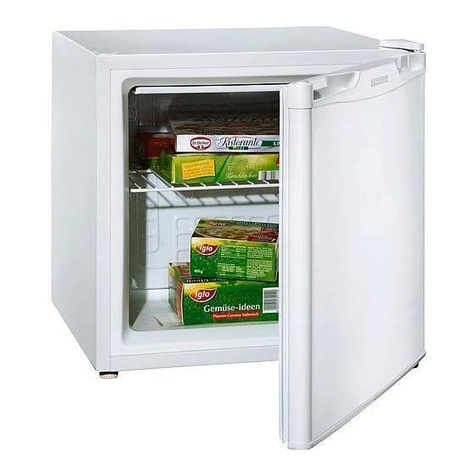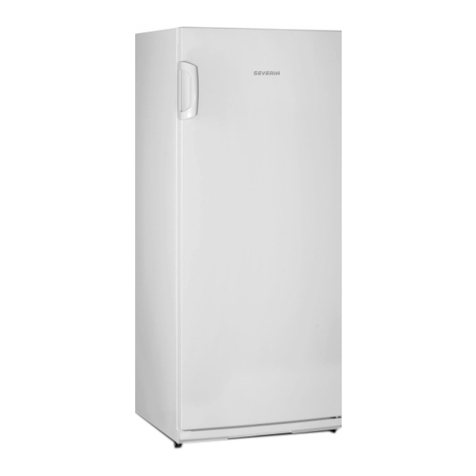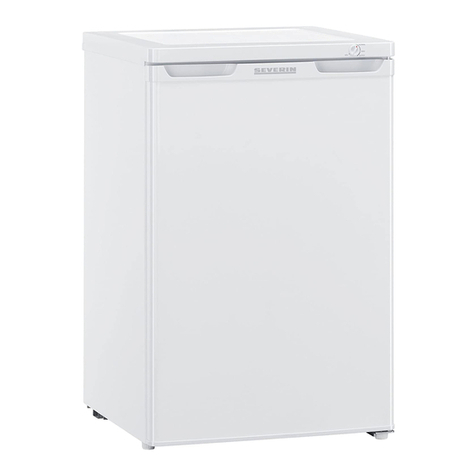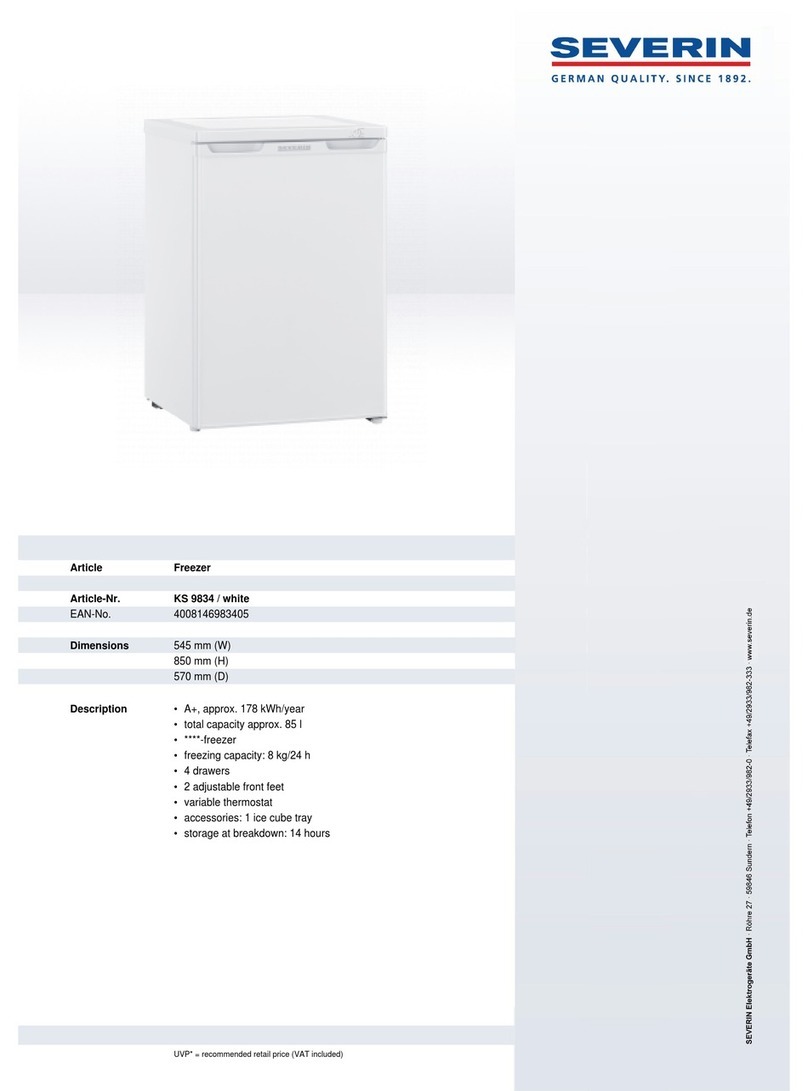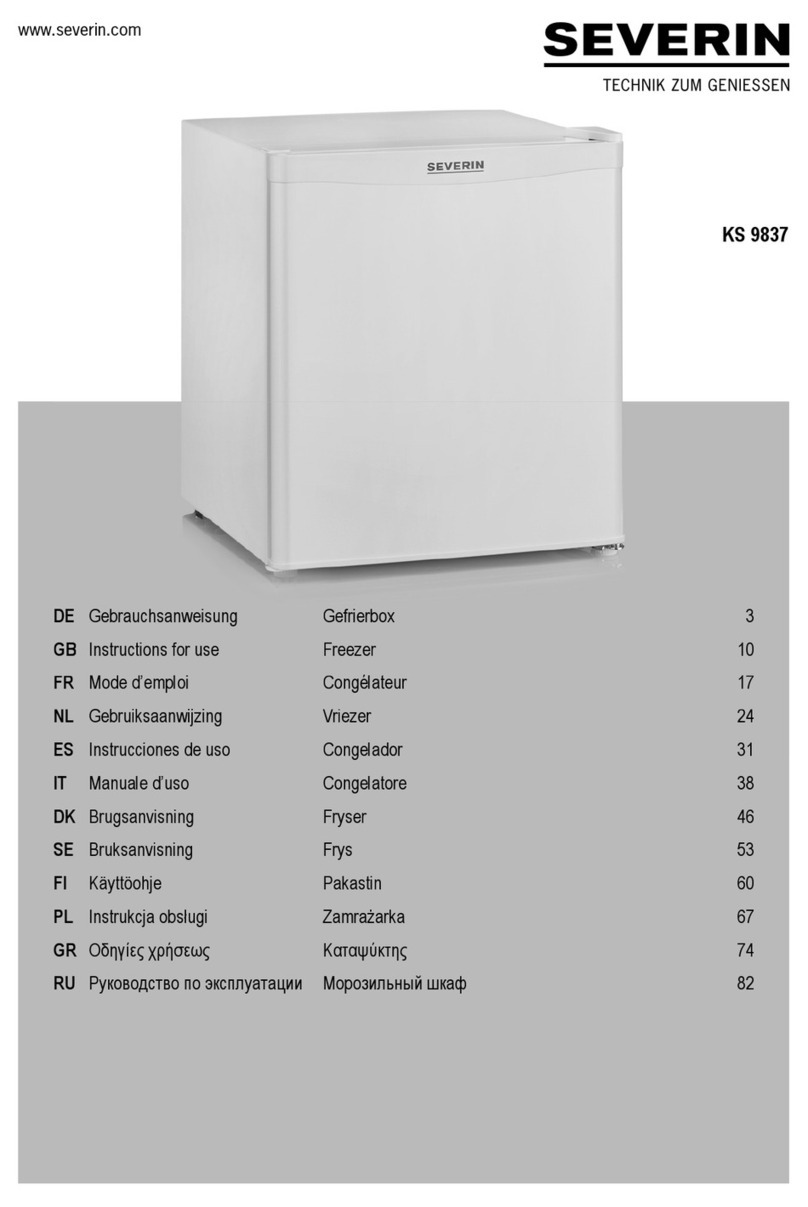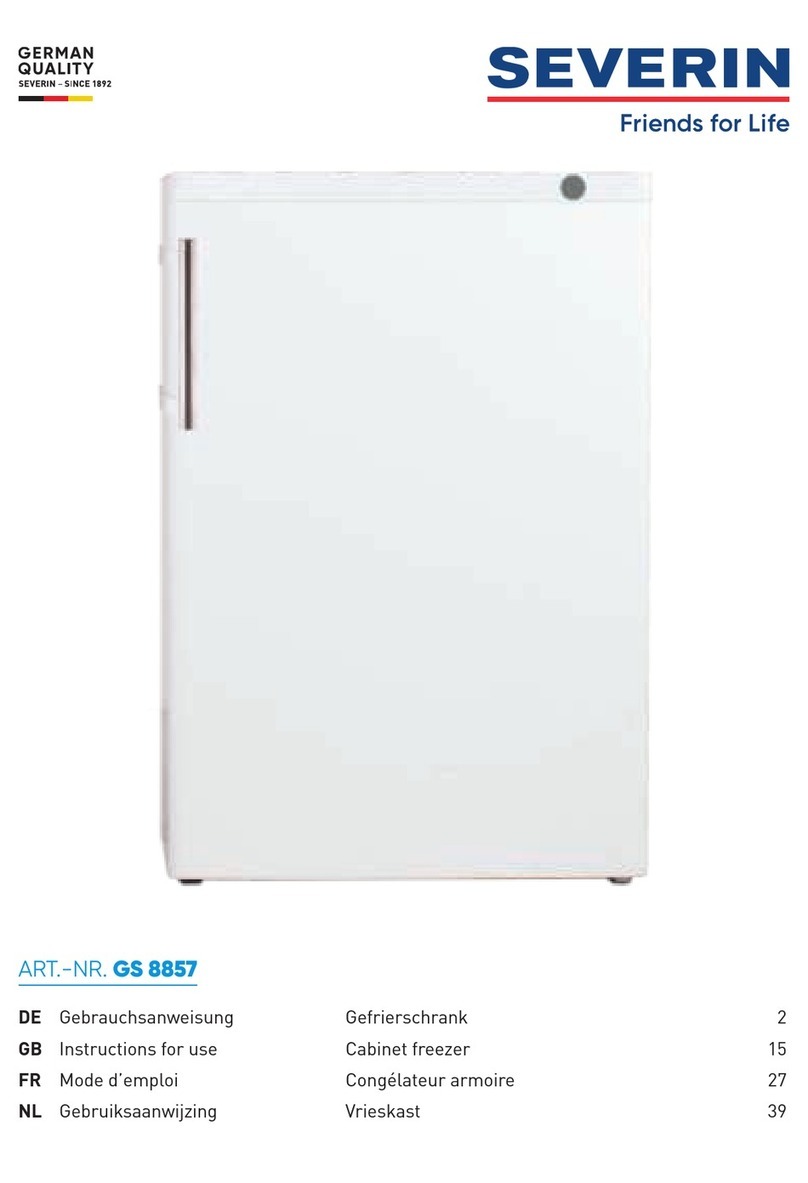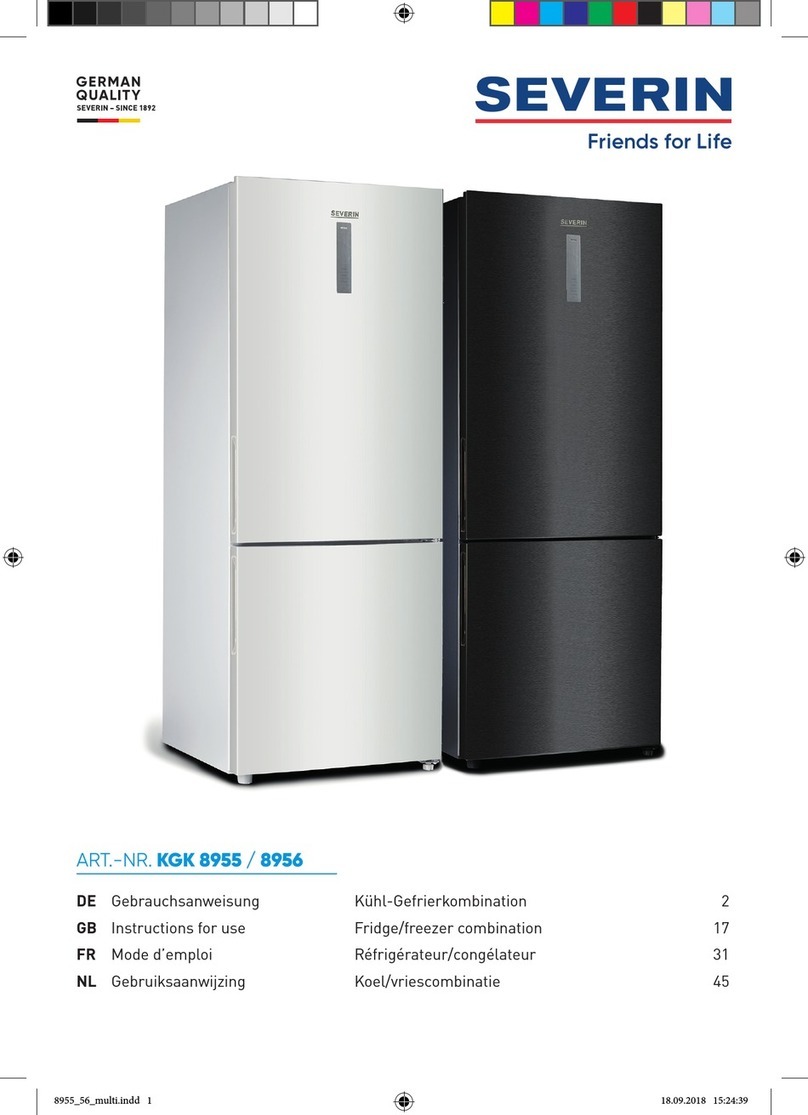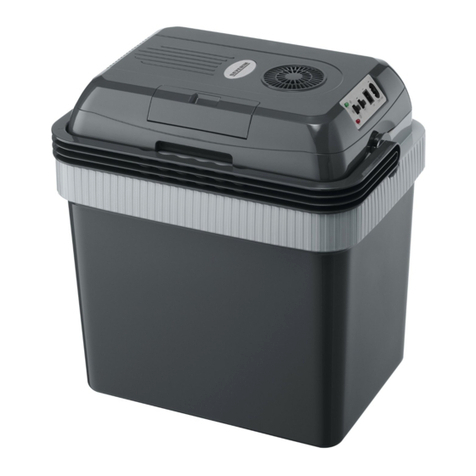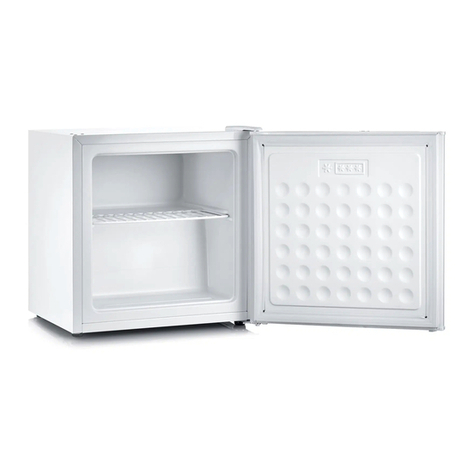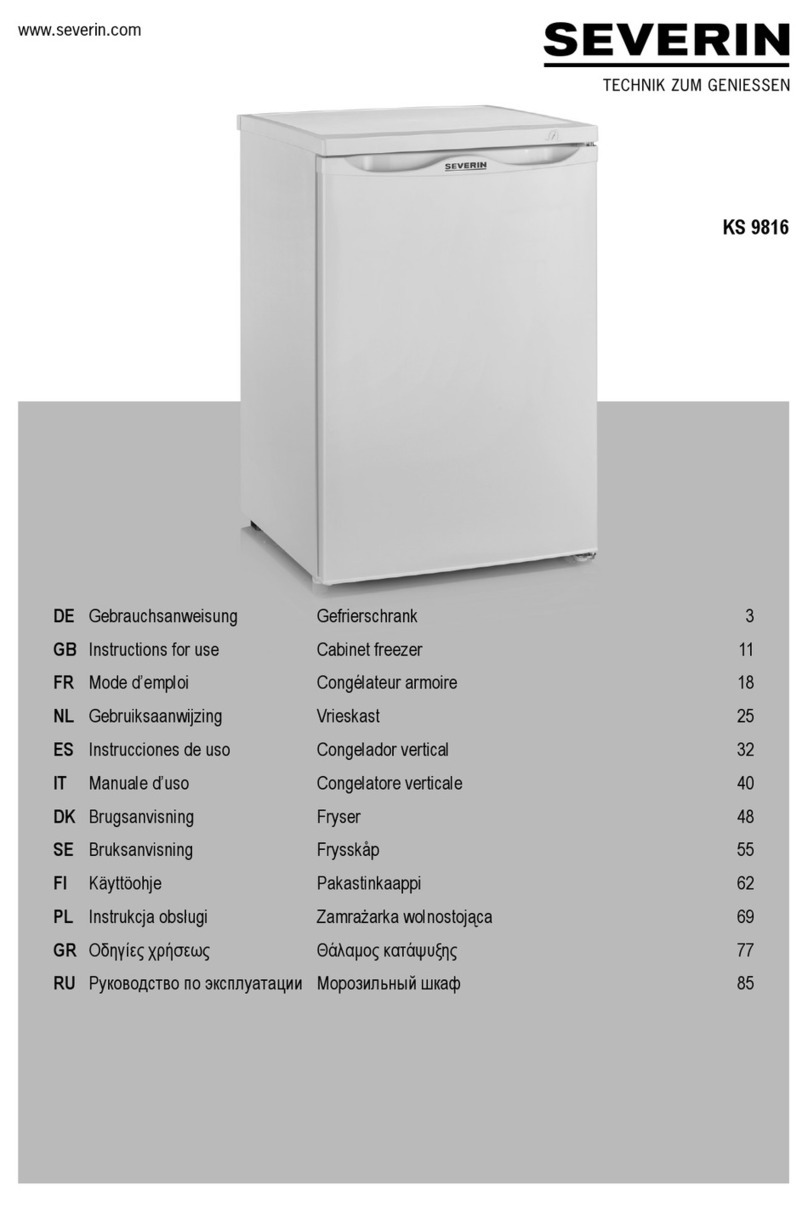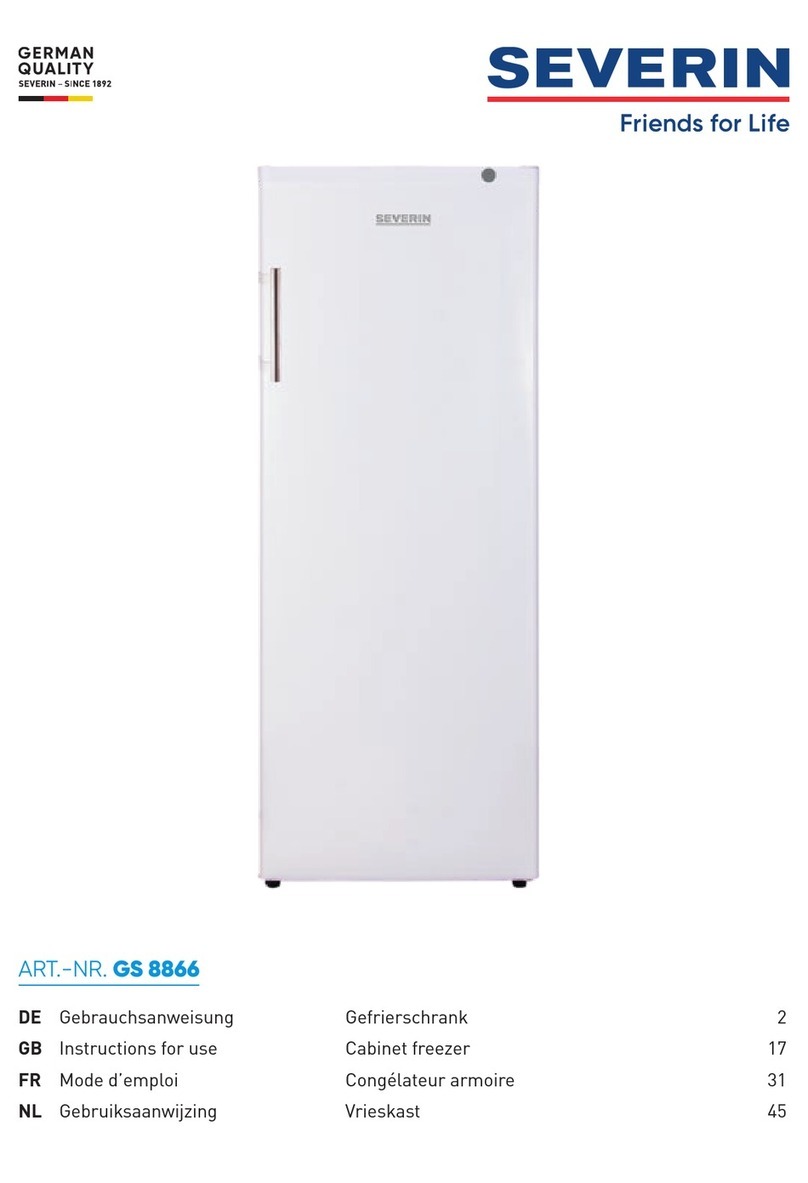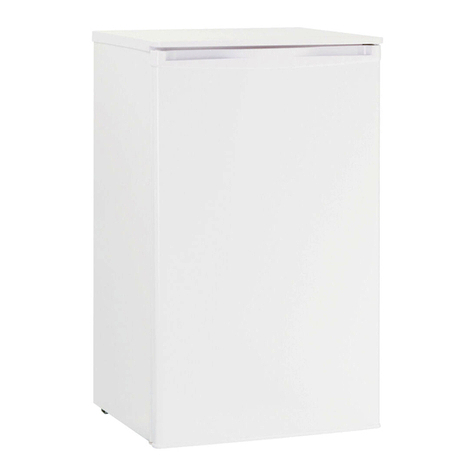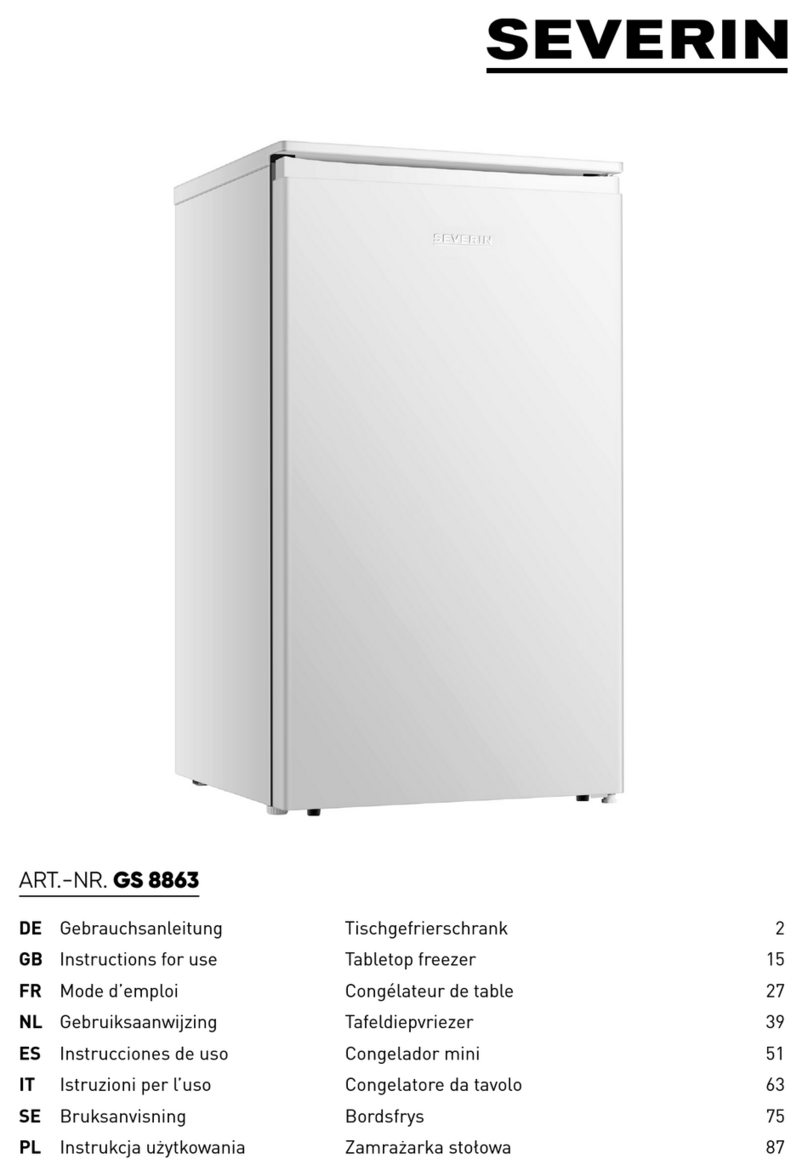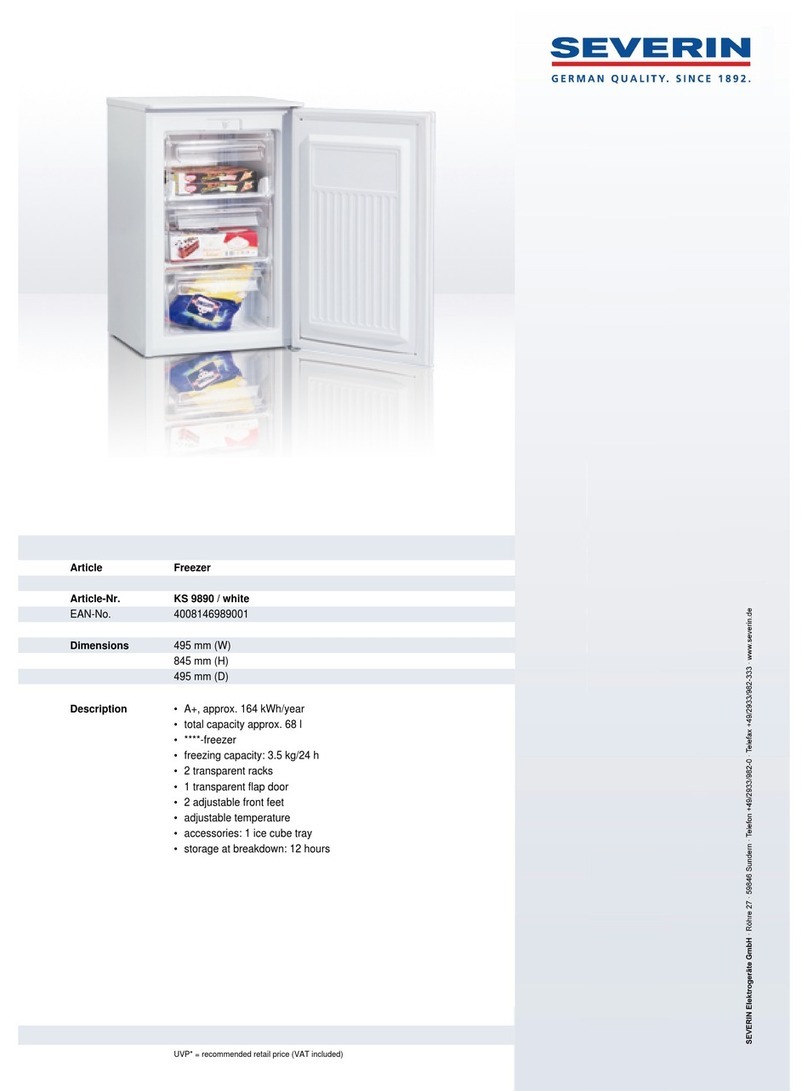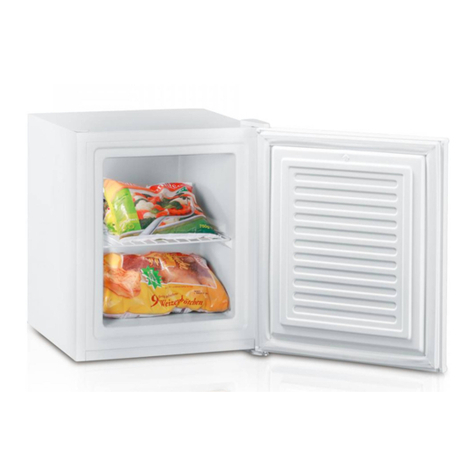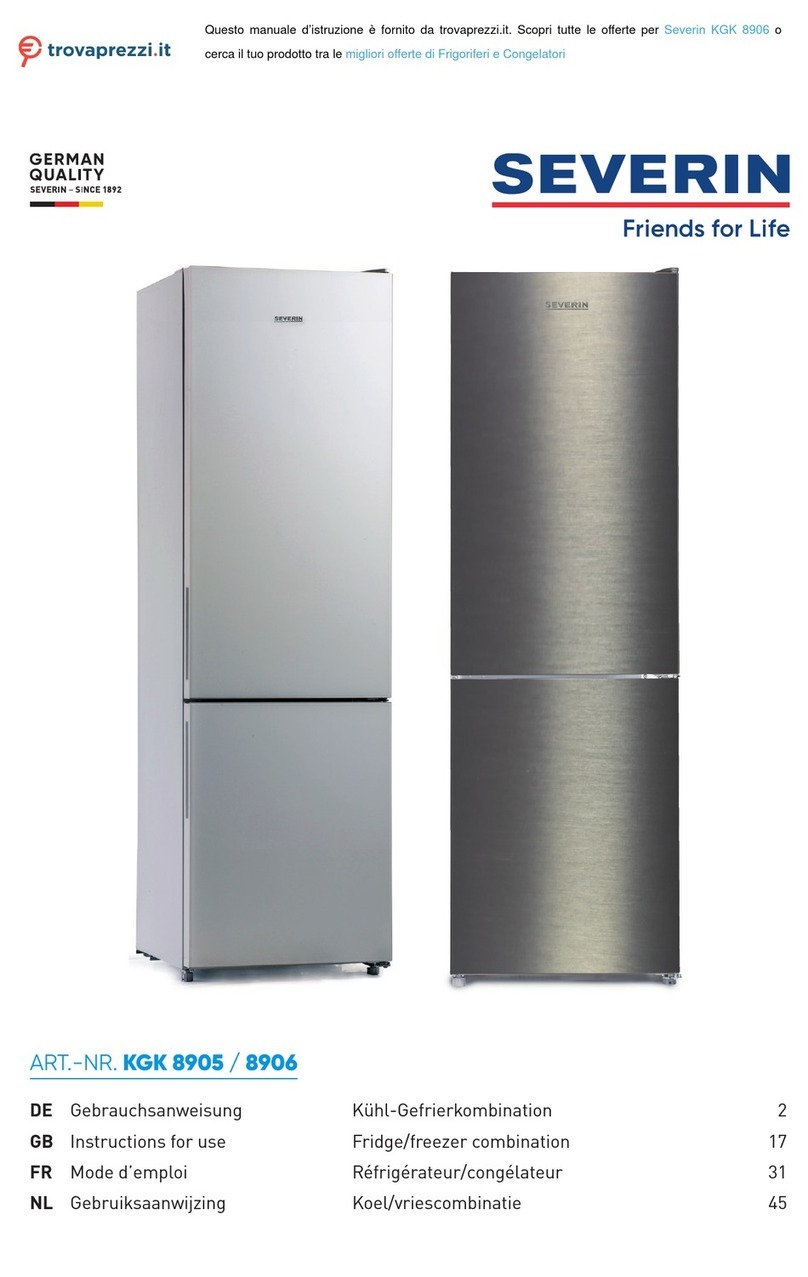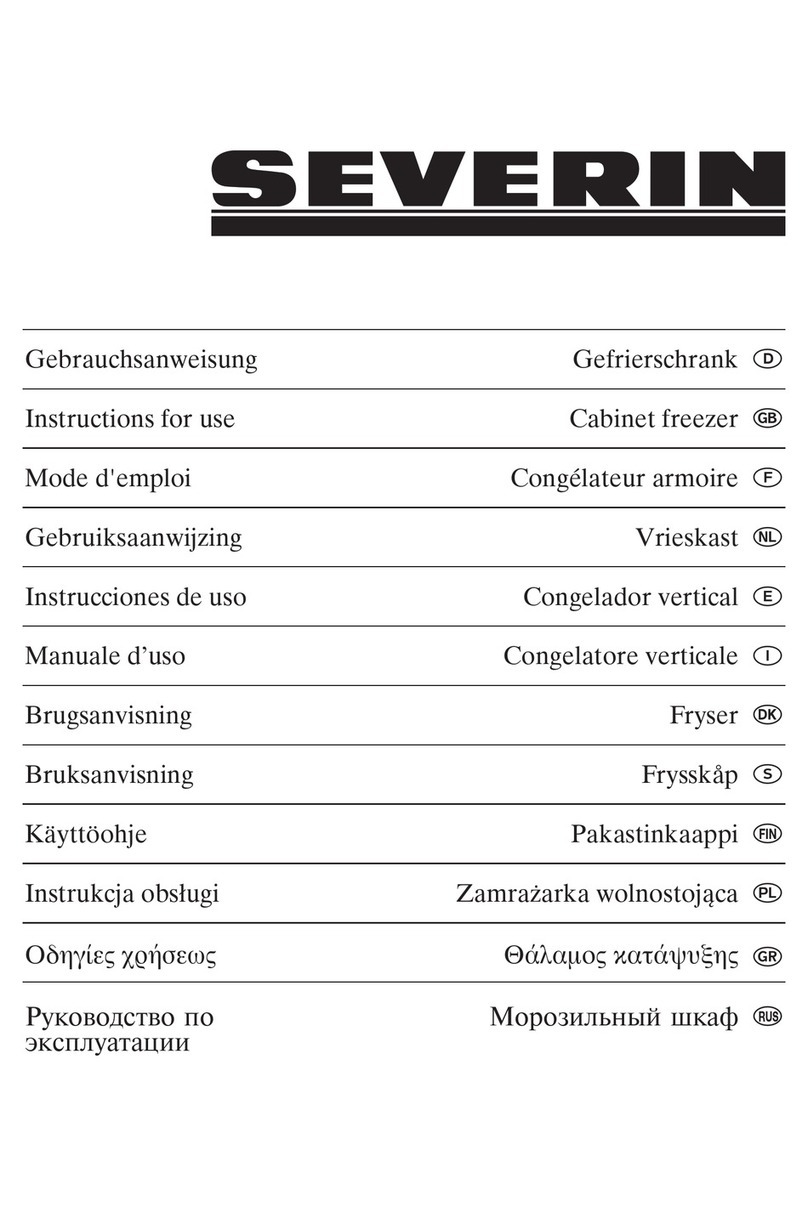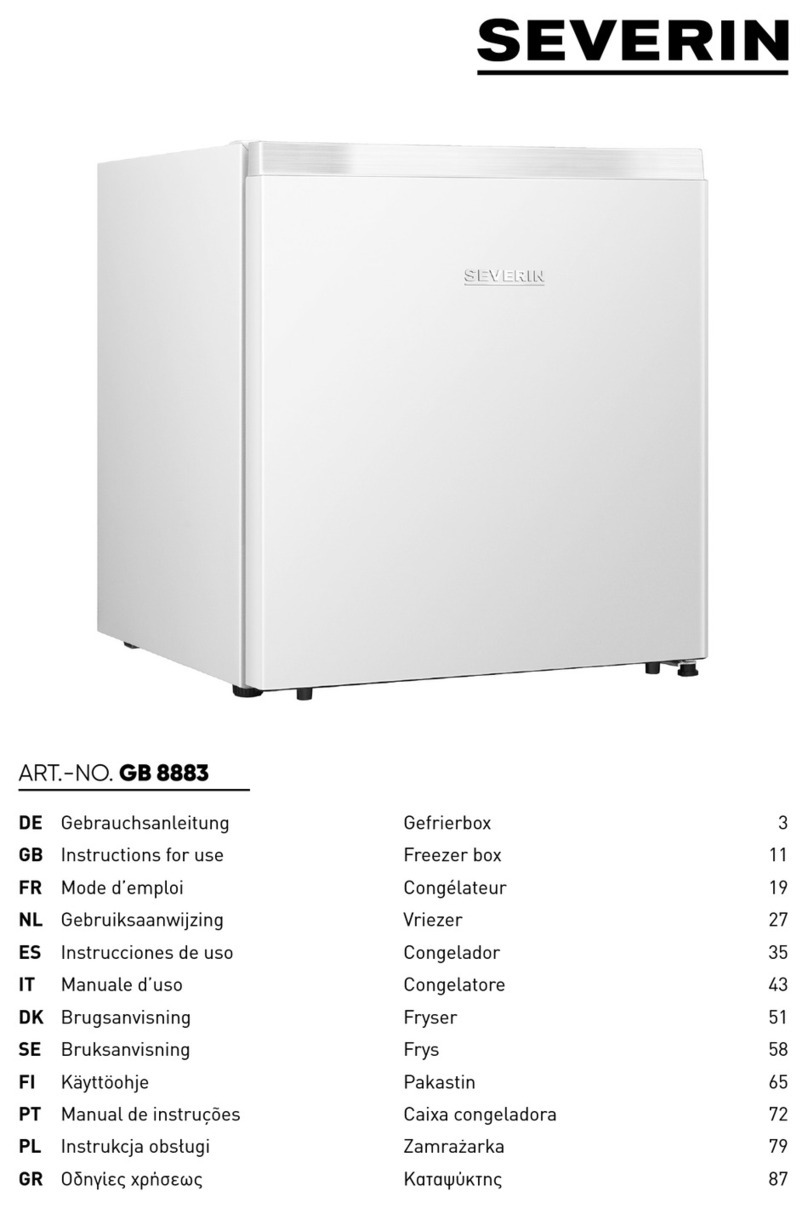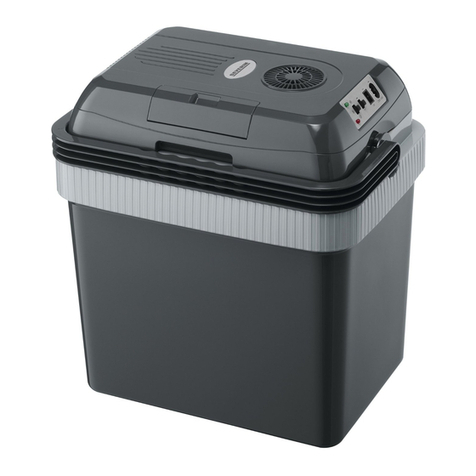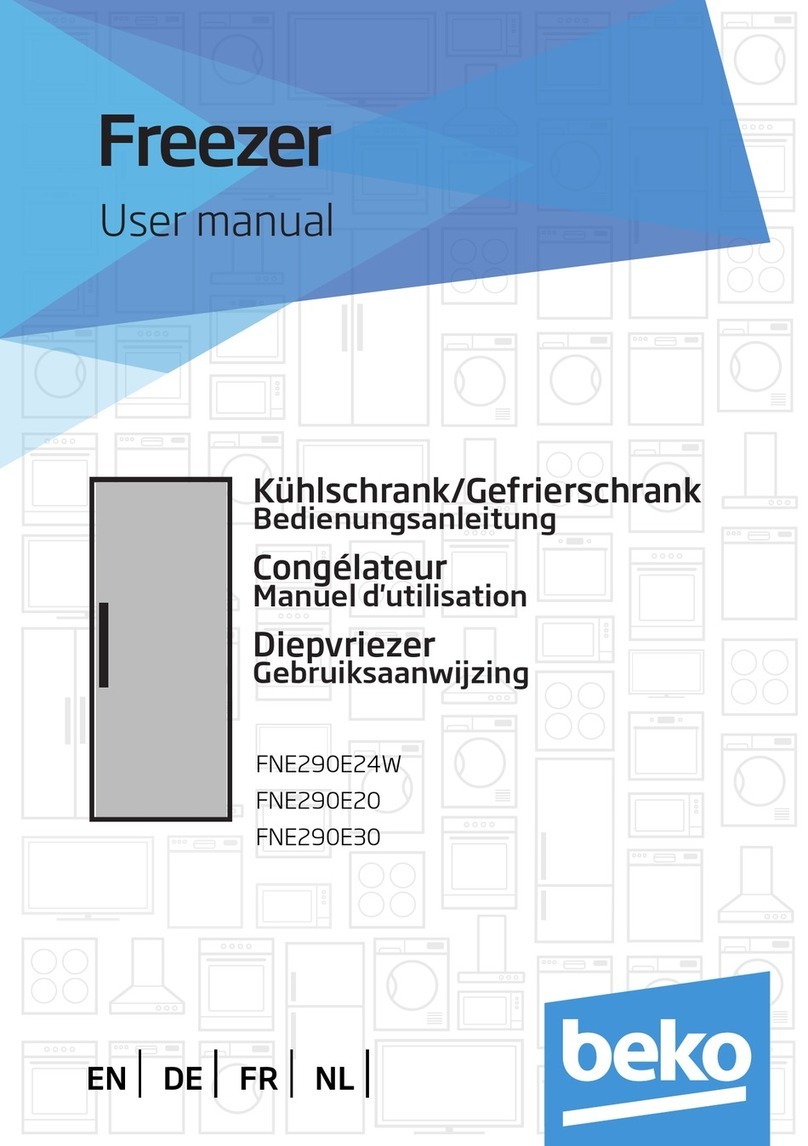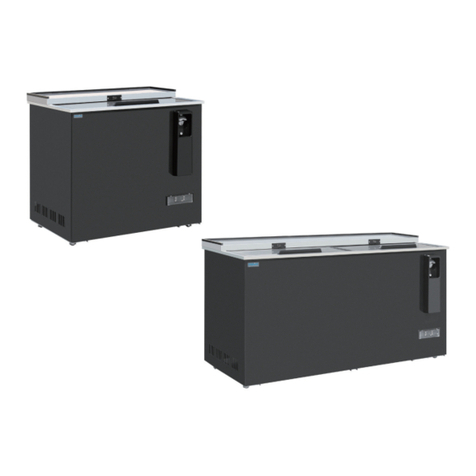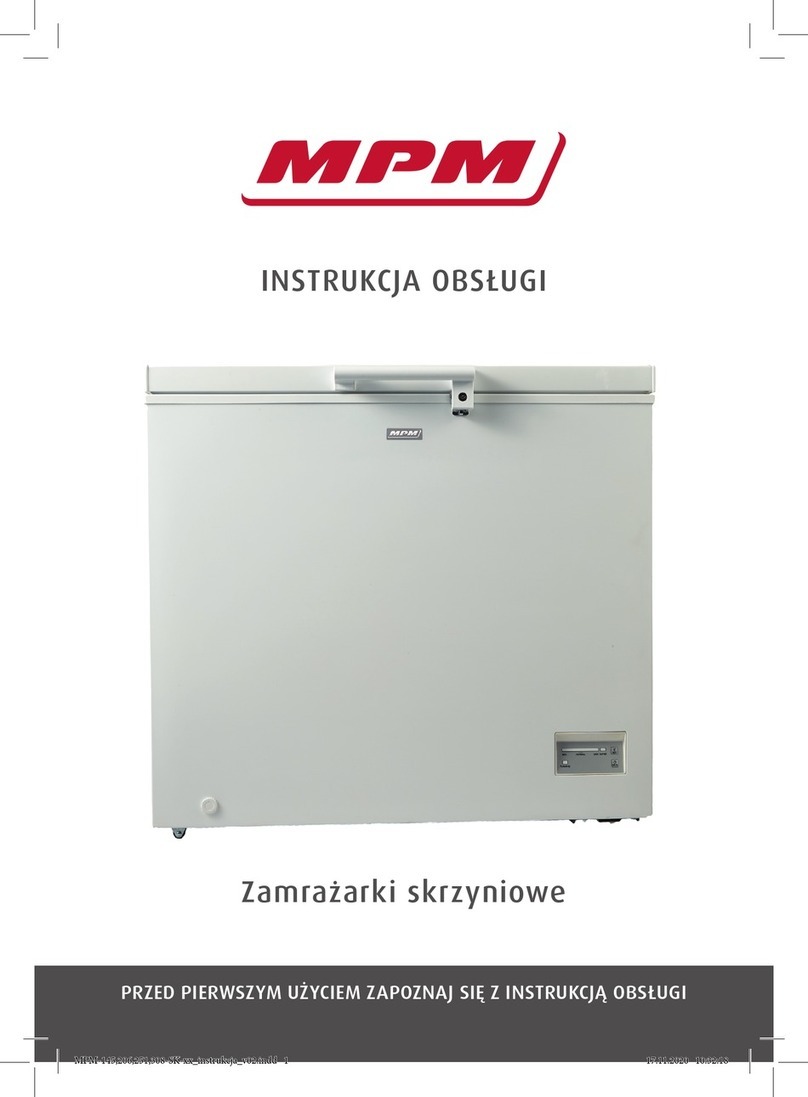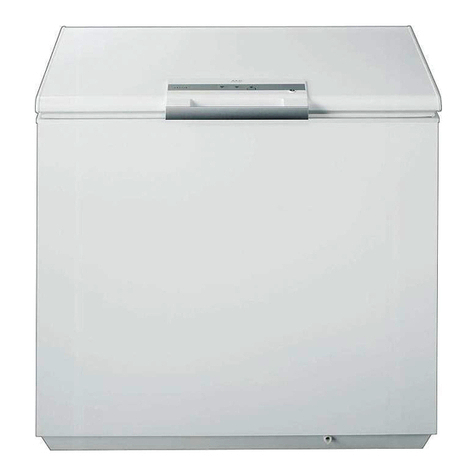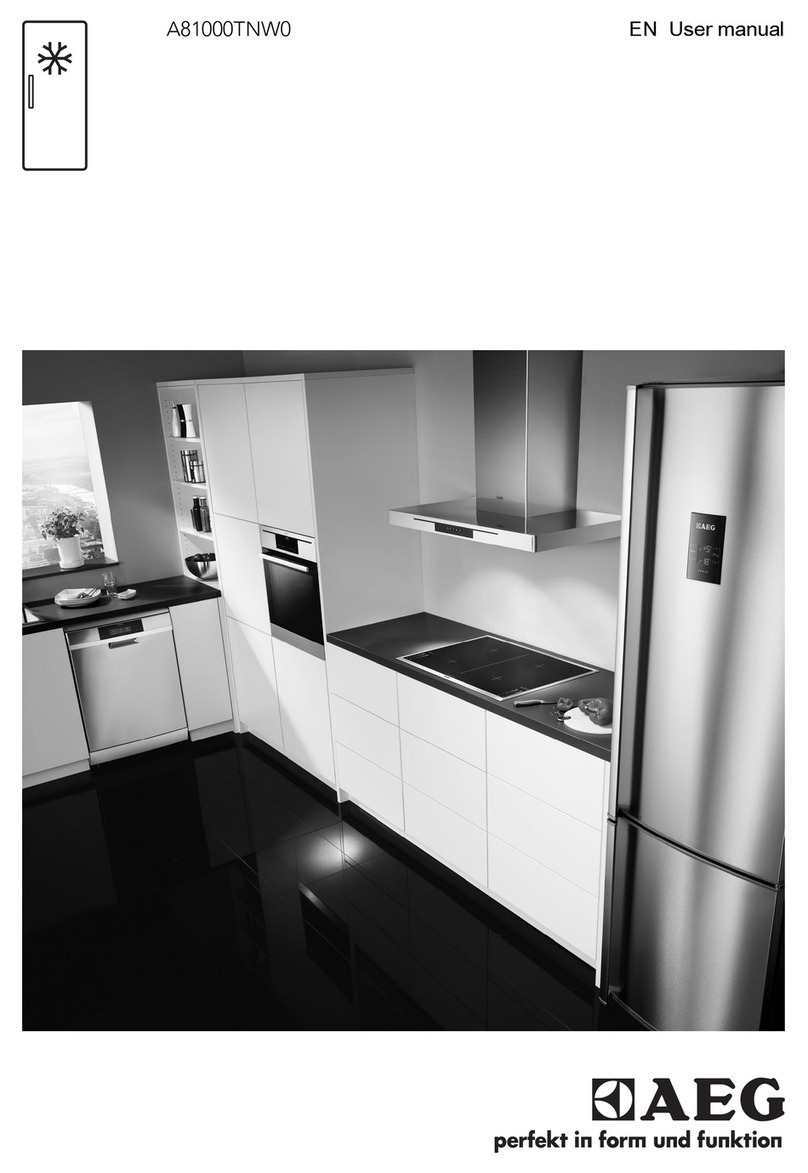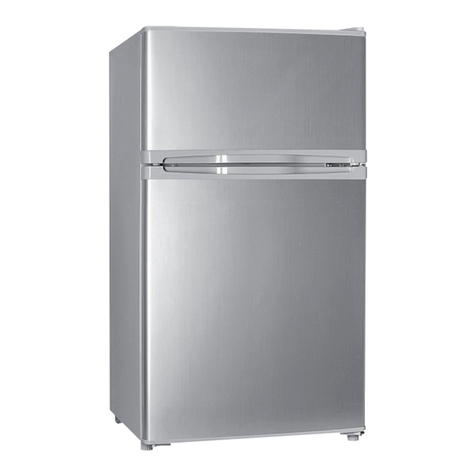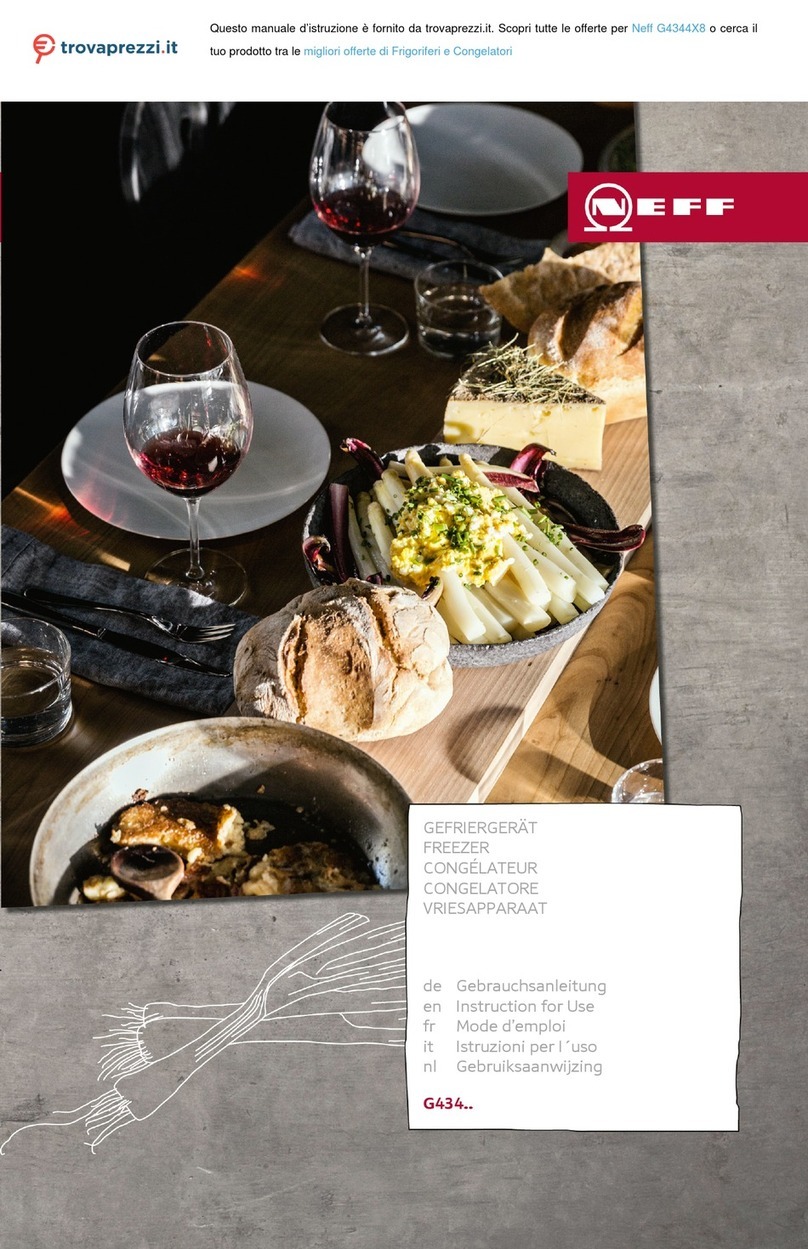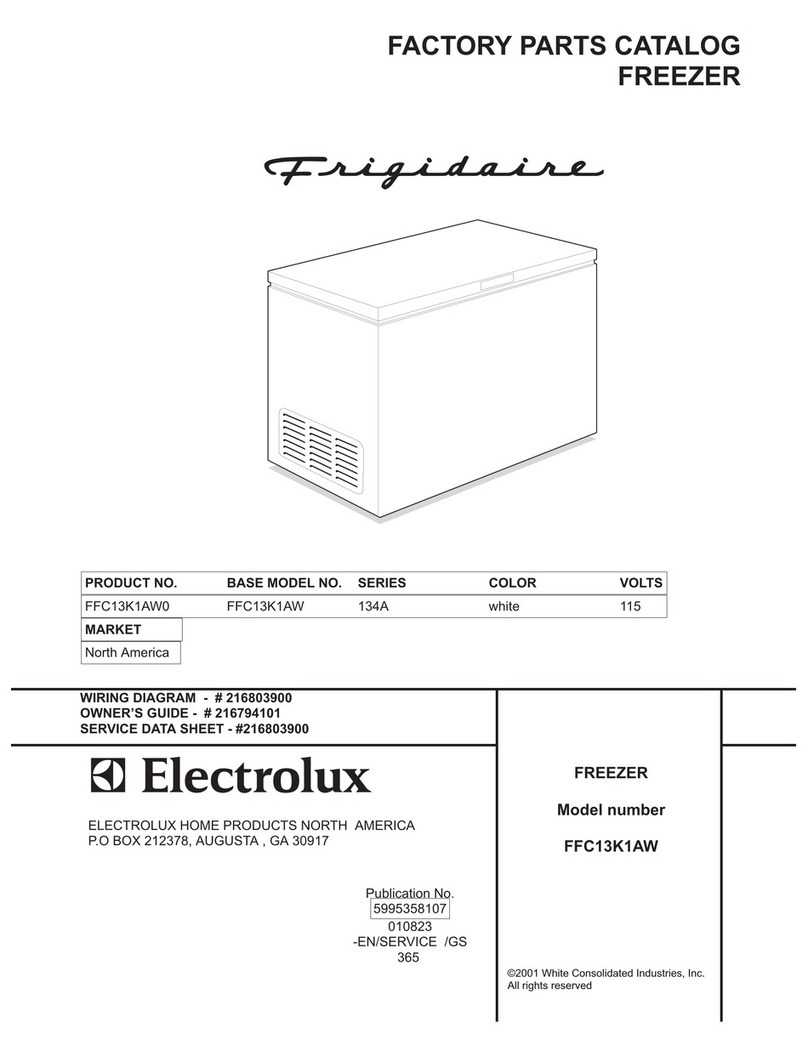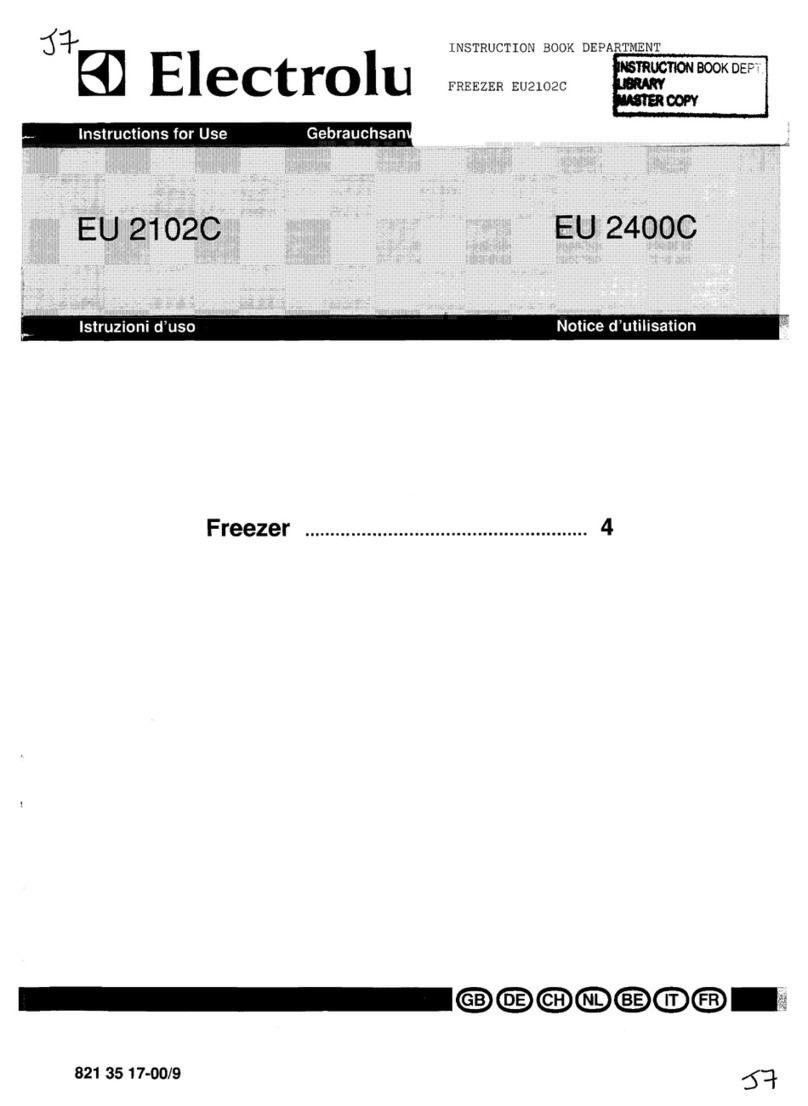
Super – intense freezing:
With the Intensive freezing setting, the compressor works permanently without any interruption,
causing the temperature inside the unit to drop quickly and thereby helping to freeze fresh food
more quickly. Once the food is sufficiently frozen, the temperature control should be set back to the
desired position.
Note: The operating temperature in the freezer largely depends on factors such as the ambient
temperature and that of the food to be newly frozen. It also depends on how often the door is opened
and how long it remains open. If necessary, the temperature control setting may be adjusted
accordingly.
Freezing and storing food
– With an operating temperature of –18°C and below, the various freezer compartments can be
used to store frozen or pre-frozen food for several months, to make ice cubes and to freeze fresh
food.
– To ensure that nutritious elements such as vitamins are not lost, fresh food should be deep-
frozen right through as quickly as possible. Caution: Do not exceed the maximum freezing
capacity per day. The product data sheet contains details of the maximum daily freezing capacity.
Spread it out well in the freezer compartment and avoid contact with food that has already been
frozen.
– Prior to freezing, fresh food (e.g. meat, fish, minced meat) should be divided into smaller
portions suitable for use after thawing).
– When storing pre-frozen food, strict attention should be paid to the manufacturer’s information
provided on the packaging. If no such information is to be found, however, a storage period of 3
months from the date of purchase must not be exceeded.
– When buying frozen food, verify that the food is properly frozen, and that the packaging does
not show any sign of damage.
– To maintain the quality of deep-frozen food, it should be transported only in suitable containers
and then placed inside the freezer compartments without delay.
– Carefully check the packaging when buying frozen food: if the packaging shows signs of
moisture, has bubbled up or is bulging, the food may not have been stored properly and has
spoiled.
– The storage times for frozen foods largely depend on the ambient temperature, the temperature
control setting, the type of food and the time between shop and freezer, but mainly also on how
often the freezer door is opened and how long it remains open. Always follow the instructions
given on the food packaging, and do not exceed the specified maximum storage times.
– Suitable packaging materials for frozen food are transparent (i.e. non-coloured) plastic foil, bags
or aluminium foil. The packaging materials should be well aired before use and then checked for
air-tightness before freezing the food. We strongly recommend that you label every item stored
in the freezer with all relevant information such as type of food, freezing date and use-by date.
– Do not deep-freeze any carbonated liquids, warm food or any liquids in glass containers or
bottles.
Use-by dates for frozen food are specified (in months) in the table below. Do not exceed these
storage times.
16

